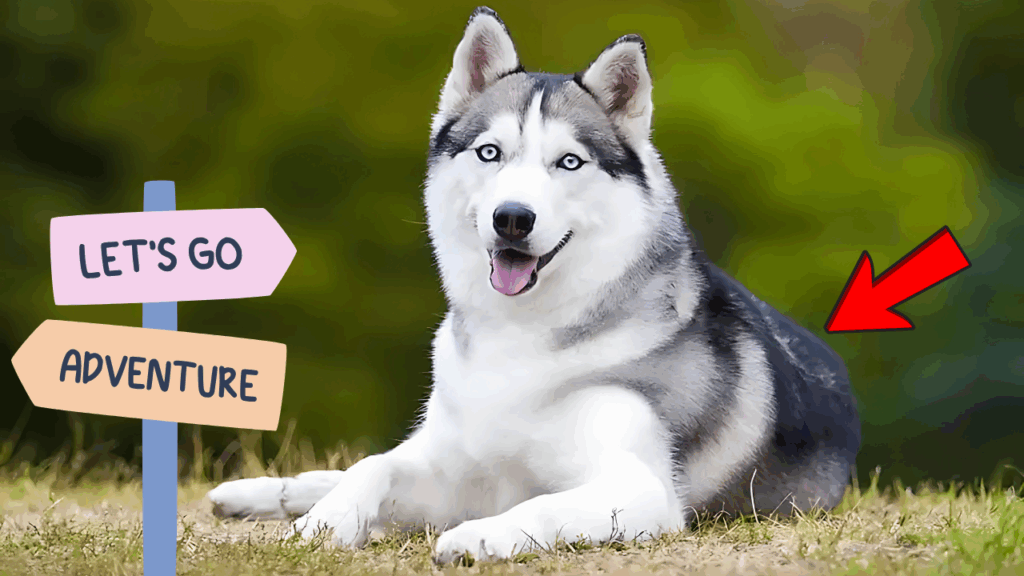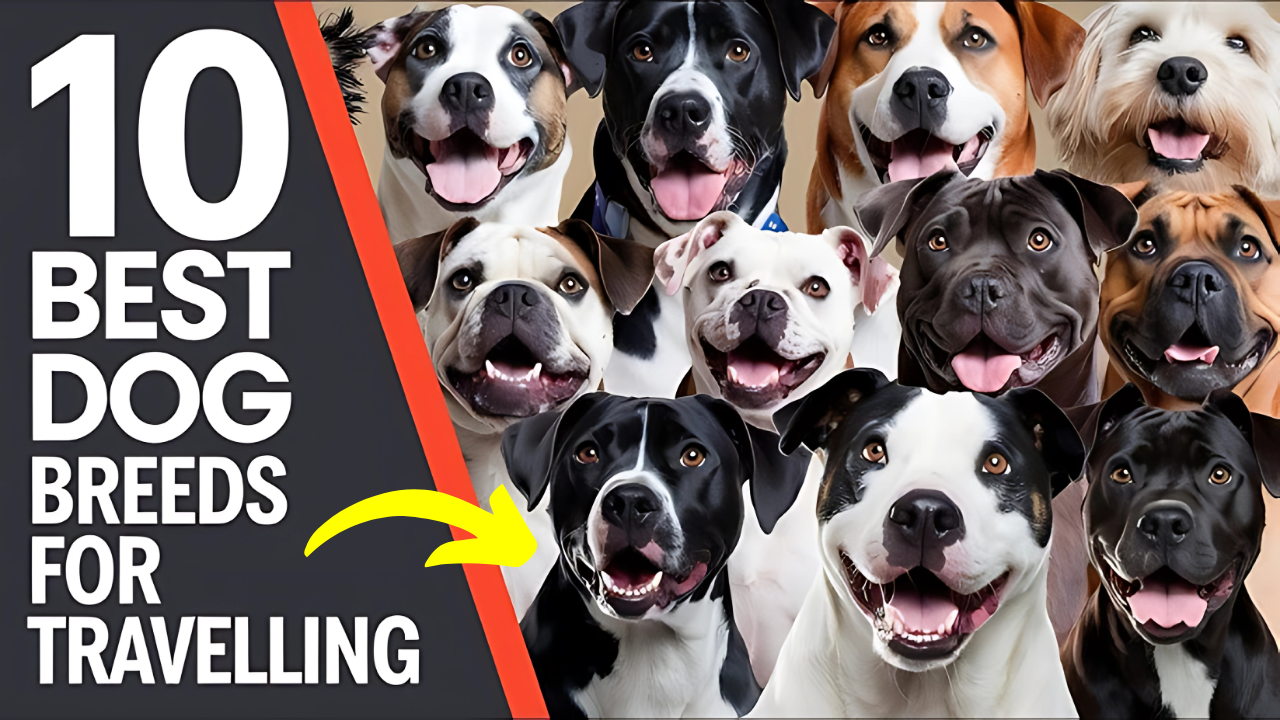Picture this: you’re lacing up your hiking boots for another weekend adventure, and there’s your furry friend at the door, tail wagging with that unmistakable “let’s go explore the world” expression. Some dogs are just born with wanderlust in their DNA, ready to tackle mountain trails, splash through streams, and discover new territories alongside their favorite humans. The most adventurous dog breeds perfect for outdoor enthusiasts. From energetic Labs to athletic Border Collies – find your ideal hiking companion.

If you’re someone who finds peace in nature’s embrace and thrills in outdoor challenges, you’ll want a canine companion who shares that same adventurous spirit. Not every dog is cut out for rugged expeditions or lengthy wilderness excursions. Some prefer the comfort of air-conditioned rooms and cozy couches. But then there are those special breeds that seem to have adventure hardwired into their very souls.
These remarkable dogs don’t just tolerate outdoor activities—they absolutely crave them. They’re the ones who’ll enthusiastically bound through puddles, navigate rocky terrain with ease, and still have energy left over for evening playtime. Their eyes light up at the sight of a backpack being packed, and they’ll happily trade a day of lounging for hours of exploration.
What Makes a Dog Truly Adventurous?
Before diving into specific breeds, it’s worth understanding what sets adventurous dogs apart from their more sedentary cousins. These remarkable canines typically possess several key characteristics that make them natural outdoor enthusiasts.
Physical Endurance and Stamina
Adventurous breeds generally have excellent cardiovascular health and muscular strength. They’ve been bred for activities that require sustained energy output, whether that’s herding sheep across vast pastures or retrieving waterfowl from icy lakes. Their bodies are built for motion, with efficient metabolisms that can fuel hours of activity without fatigue.
Mental Resilience and Adaptability
The great outdoors presents countless variables—changing weather, unfamiliar sounds, new scents, and unexpected challenges. Dogs with adventurous temperaments handle these situations with confidence rather than anxiety. They’re curious rather than fearful when encountering something new, and they bounce back quickly from minor setbacks.
Strong Bonding Instincts
Most adventure-ready breeds have been developed to work closely with humans. This creates dogs who are naturally inclined to stay near their owners, follow commands, and participate as true partners rather than just pets who happen to tag along.
Top Adventurous Dog Breeds for Outdoor Enthusiasts
Labrador Retriever: The Quintessential Adventure Buddy
Labs have earned their reputation as America’s favorite dog for good reason. These golden, chocolate, or black-coated athletes are essentially four-legged embodiments of enthusiasm. Originally developed to retrieve ducks from the frigid waters of Newfoundland, they possess an almost supernatural love for water activities.
What makes Labs exceptional adventure companions is their remarkable versatility. They’re equally comfortable on mountain trails, sandy beaches, or forest paths. Their double-layered coats provide excellent insulation in cold weather, while their webbed toes make them natural swimmers. I’ve watched Labs happily dive into mountain lakes that made even experienced hikers shiver just looking at them.
Their temperament is perfectly suited for family adventures too. Labs are patient with children, friendly with strangers, and generally well-behaved around other dogs. This social adaptability means you can take them to crowded campgrounds, busy trailheads, or dog-friendly outdoor events without worry.
Training Labs for outdoor adventures is usually straightforward thanks to their eagerness to please and food motivation. Most will quickly learn to stay close on trails, come when called, and even carry their own water in specialized dog backpacks.
Border Collie: The Athletic Intellectual
If you’re looking for a dog that combines Olympic-level athleticism with PhD-level intelligence, the Border Collie is your answer. These medium-sized dynamos were bred to think independently while herding sheep across the rugged Scottish Highlands, creating dogs with unmatched problem-solving abilities and physical capabilities.
Border Collies approach outdoor adventures like chess masters approach a challenging game. They’re constantly analyzing their environment, anticipating obstacles, and making split-second decisions. This mental engagement actually enhances their physical performance, as they learn to read terrain and adjust their movement accordingly.
Their energy levels are legendary, but it’s important to understand that Border Collies need mental stimulation alongside physical exercise. A simple long walk won’t satisfy them—they want challenges that engage their minds. Hide-and-seek games during hikes, teaching them to navigate obstacle courses, or even letting them “help” with camping setup can provide the mental workout they crave.
One thing to consider: Border Collies can be intense. They form deep bonds with their owners and may become overly focused or protective. Early socialization and consistent training help channel this intensity in positive directions.
Australian Shepherd: The Colorful Powerhouse
Despite their name, Australian Shepherds were actually developed in the American West to handle livestock in challenging terrain. These stunning dogs, with their merle coats and striking eyes, are natural athletes who thrive on having jobs to do.
Aussies bring remarkable versatility to outdoor adventures. They’re agile enough for rock hopping, strong enough for long-distance hiking, and intelligent enough to learn complex trail etiquette. Many Australian Shepherds excel at activities like disc dog, agility, and even search and rescue work.
What sets Aussies apart is their incredible loyalty and desire to be actively involved in everything their family does. They’re not content to simply follow along—they want to participate, contribute, and be true partners in whatever adventure you’re planning.
However, this breed’s high intelligence can be a double-edged sword. Without adequate mental and physical stimulation, Australian Shepherds can become destructive or develop behavioral issues. They need owners who are committed to providing consistent exercise and training.
Siberian Husky: The Arctic Explorer
Few breeds embody the spirit of adventure quite like the Siberian Husky. These magnificent dogs were bred by the Chukchi people to pull sleds across vast Arctic distances, developing incredible endurance and an almost mystical connection to the wilderness.
Huskies are built for endurance rather than speed. They can maintain a steady pace for hours, making them ideal companions for long hiking expeditions or winter sports activities. Their thick double coats allow them to remain comfortable in surprisingly cold conditions, though they can overheat in hot weather.
The Husky personality is uniquely captivating. They’re playful, social, and surprisingly vocal—many “talk” to their owners with an array of howls, whines, and grumbles that can sound almost conversational. This communication style often makes them feel more like adventure partners than pets.
One important consideration: Huskies are escape artists with strong prey drives. They need secure fencing and should generally remain leashed during adventures unless in completely enclosed areas. Their independent nature means recall training can be challenging.
German Shorthaired Pointer: The Versatile Athlete
German Shorthaired Pointers represent the perfect blend of athletic ability, intelligence, and trainability. Originally developed to be all-purpose hunting dogs, they’re comfortable on land or in water, equally adept at pointing game birds or retrieving waterfowl.
GSPs are medium to large dogs with sleek, liver-colored coats that require minimal grooming—a practical advantage for outdoor enthusiasts. Their lean, muscular build gives them excellent speed and agility, while their webbed feet make them strong swimmers.
What makes GSPs exceptional adventure companions is their balanced temperament. They’re energetic enough for challenging activities but calm enough to relax around the campfire afterward. They’re social with other dogs and typically good with children, making them excellent family adventure dogs.
These dogs do require substantial daily exercise—a casual walk around the block won’t suffice. They thrive with activities that engage their natural hunting instincts, such as hiking in areas where they can safely explore and investigate interesting scents.
Vizsla: The Elegant Adventurer
The Hungarian Vizsla combines elegance with athleticism in a way that few breeds can match. These rust-colored beauties were bred as hunting companions for Hungarian nobility, creating dogs that are both refined and incredibly capable outdoors.
Vizslas are known for their “velcro dog” tendencies—they prefer to stay close to their favorite humans at all times. This characteristic actually makes them excellent hiking companions, as they naturally stick near their owners without requiring constant recalls.
Their sleek, short coats mean they’re comfortable in warm weather but may need additional protection in cold conditions. However, their enthusiasm for outdoor activities often helps them stay warm through movement and excitement.
Vizslas are particularly well-suited for active families because they’re gentle with children while still being energetic enough for serious outdoor adventures. They’re also highly trainable and eager to please, making them relatively easy to prepare for various outdoor activities.
Weimaraner: The Silver Ghost
Weimaraners, with their distinctive silver-gray coats and piercing eyes, were originally bred to hunt large game in German forests. This heritage created dogs with incredible courage, stamina, and intelligence—traits that translate beautifully to modern outdoor adventures.
These dogs are physically impressive, with athletic builds that combine strength and grace. They’re excellent runners and swimmers, capable of handling challenging terrain with confidence. Their natural pointing instincts remain strong, often making them entertaining hiking companions as they freeze in classic point positions when encountering interesting wildlife.
Weimaraners form intense bonds with their families and prefer to be included in all activities. They’re not dogs who can be left alone for long periods—they genuinely suffer when separated from their people. This attachment, while sometimes challenging, creates incredibly loyal adventure companions.
Like many intelligent, high-energy breeds, Weimaraners need consistent mental and physical stimulation. They excel at activities that challenge both their bodies and minds, such as tracking, agility, or organized dog sports.
Preparing Your Adventurous Dog for Outdoor Activities
Building Physical Fitness Gradually
Even naturally athletic dogs need time to build up their endurance for serious outdoor adventures. Start with shorter hikes and gradually increase distance and difficulty. Pay attention to your dog’s breathing, gait, and overall demeanor to ensure they’re building fitness rather than experiencing exhaustion.
Essential Gear for Adventure Dogs
Proper equipment can make outdoor adventures safer and more enjoyable for both you and your dog. Consider investing in a well-fitted harness, collapsible water bowls, paw protection for rough terrain, and possibly a dog backpack for longer expeditions.
Training for Trail Safety
Basic obedience becomes crucial in outdoor environments. “Leave it,” “stay,” and reliable recall can literally be life-saving commands when encountering wildlife, dangerous plants, or unstable terrain. Practice these commands in various outdoor settings before attempting more challenging adventures.
Health Considerations for Active Breeds
Adventure-ready breeds often have specific health considerations related to their high activity levels and genetic backgrounds. Hip and elbow dysplasia can be concerns for larger breeds, while eye conditions may affect herding breeds. Regular veterinary checkups and screening tests help ensure your adventure companion stays healthy throughout their active years.
Nutrition also plays a crucial role in supporting active dogs. High-quality protein supports muscle development and recovery, while appropriate caloric intake matches their elevated energy expenditure. Many active dogs benefit from performance-oriented dog foods designed for working animals.
Matching Your Lifestyle with the Right Breed
Choosing an adventurous dog breed requires honest self-assessment of your lifestyle, experience level, and long-term commitment. These dogs typically live 10-15 years, and their exercise needs don’t diminish significantly with age until their senior years.
Consider your living situation, available time for training and exercise, and the specific types of outdoor activities you enjoy most. A dog bred for water retrieval might not be the best choice if you primarily enjoy desert hiking, while a cold-weather breed might struggle in consistently hot climates.
Frequently Asked Questions
Q: How much daily exercise do adventurous dog breeds typically need? Most adventurous breeds require 1-3 hours of vigorous daily exercise, including both physical activity and mental stimulation.
Q: Can adventurous dog breeds live in apartments or small spaces?
While possible with sufficient daily exercise, most adventurous breeds thrive with access to yards or nearby open spaces.
Q: At what age can I start taking my puppy on serious hiking adventures?
Wait until your puppy’s growth plates have closed (typically 12-18 months for most breeds)
The bond between an adventure-loving human and their equally adventurous canine companion creates some of life’s most memorable experiences. These remarkable breeds don’t just accompany you on outdoor journeys—they enhance every moment with their enthusiasm, loyalty, and infectious love of exploration. Whether you’re planning weekend day hikes or extended backcountry expeditions, the right adventurous breed will be your most devoted and capable partner in discovering the natural world’s endless wonders.

